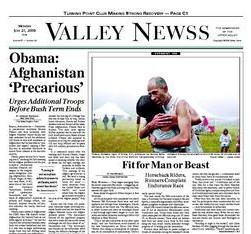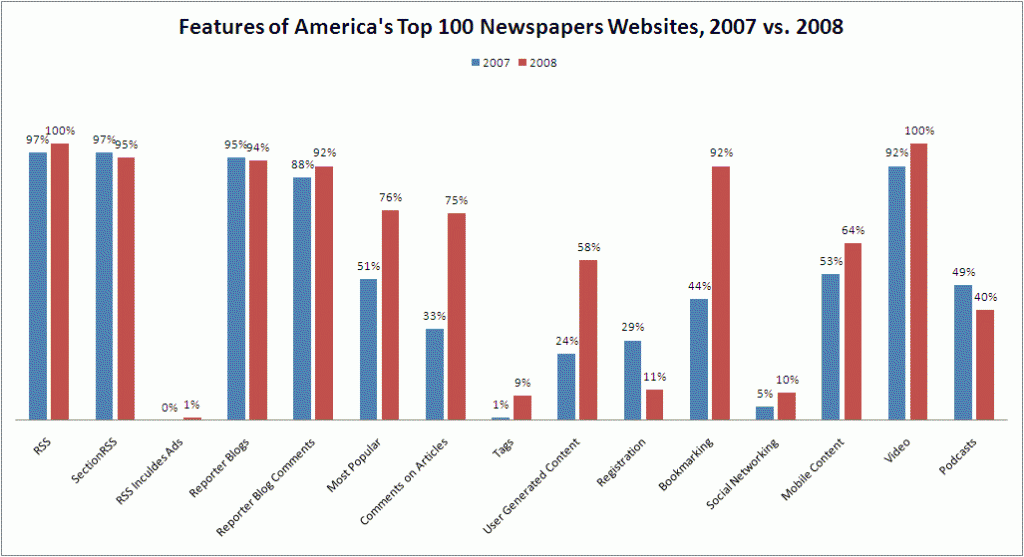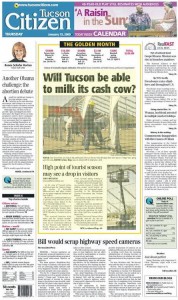 Add one more name to the list of the newspaper industry’s walking dead: those titles that have been put up for sale with the threat of closure if a buyer isn’t found. Colorado’s Rocky Mountain News and Seattle’s Post-Intelligencer are both in limbo awaiting rescue and now Gannett Corp. has added the Tucson Citizen to the auction, stating that if a buyer isn’t found by March 21, the afternoon daily will close.
Add one more name to the list of the newspaper industry’s walking dead: those titles that have been put up for sale with the threat of closure if a buyer isn’t found. Colorado’s Rocky Mountain News and Seattle’s Post-Intelligencer are both in limbo awaiting rescue and now Gannett Corp. has added the Tucson Citizen to the auction, stating that if a buyer isn’t found by March 21, the afternoon daily will close.
The Citizen has been published by Gannett in a joint operating agreement partnership with Lee Enterprises, owner of the Arizona Daily Star. Gannett has actually made out in the deal because the Daily Star makes more money than the Citizen and has to pay a share of profits to its competitor. But even that apparently isn’t enough to make the Citizen a worthwhile investment for Gannet. D-Day is March 21.
Some Pols Miss the Heat
In an ironic twist, public officials are beginning to complain about the loss of the watchdog journalists who used to keep them awake at night.
Broward/Palm Beach’s New Times carries an opinion piece featuring quotes from numerous government officials complaining about the lack of journalistic oversight. Financial problems at the Miami Herald and the Fort Lauderdale Sun-Sentinel, compounded by Florida’s sour economy, have led to massive staff cuts. That means some cities that used to have two reporters are now covered by one third of one reporter.
“[The Sentinel] doesn’t seem to have the interest in going after big-time issues that require work,” says Broward Public Defender Howard Finkelstein, in one of several quotes that illustrate how the industry’s turmoil is hitting home on Main St.. “They want to write quick things for the blog. It just looks like it’s falling apart to me.”
Writer Bob Norman says the city of Hollywood, which is home to more than 140,000 souls, doesn’t have a full-time beat reporter for the first time in memory. Sunrise (pop. 85,000) is also almost uncovered. “The state of journalism in Broward has been decimated,” Norman writes. This has put government officials in the odd position of mourning the loss of the same watchdogs who used to make them miserable.
“The newspapers used to be the watchdogs of the government, and people relied on them to tell the truth,” says Sunrise Commissioner Sheila Alu. “Now they’re just filled with advertisements.” But perhaps reflecting the love/hate relationship elected officials have with the fourth estate, she adds, “Believe me, we’re fine with it.”
But Jim McDermott isn’t. The Democratic Congressman from the state of Washington is mad as hell about the possible closure of the Seattle Post-Intelligencer and he intends to do something about it. McDermott, who is also a senior member of House Ways and Means Committee, says in a guest column in the P-I that perhaps we should steal a page from the UK and let more of our newspapers operate as nonprofits. “The tax code might have a direct bearing on developing a new business model for the newspaper business nationwide,” he says. In other words, if all those newspaper conglomerates would be willing to convert to nonprofit status, the government could help them out. Tell that to the folks at National Public Radio, which cut 7% of its workforce and cancelled several programs last month.
McClatchy Watch points to an analysis of recent investigative reporting at the Kansas City Star that cites glaring holes in the story. It’s probably not the reporter’s fault, the writer points out. Writer Eric Adler is a seasoned pro. But the lack of news and copy editors caused some basic questions to go unanswered.
Turnover Epidemic
The industry’s downturn is taking its toll on top management. The New York Times documents editor and publisher turnover at top US titles and says it’s out of control. In fact, 19, of the 20 largest newspapers in the country have changed their top editors this decade. The next to go will be Ken Paulson, who leaves USA Today in February.
Editors and publishers are under unprecedented pressure to do more with less, the Times reports, and angry CEOs are quick to boot them out when they fail. Editors, in particular, are preoccupied with revenues and income statements. “My involvement in business concerns went from something like 15 percent of my time to about 50 percent,” says Paul Steiger, who retired in 2007 as managing editor of The Wall Street Journal, and who now heads the nonprofit journalism foundry ProPublica. The turnover may be necessary. A lot of executives who were successful in good times have been like deer in the headlights when faced with the need to slash and burn through their business.
Maybe the problem is consolidation? From the Media Reform Information Center (via Derek Gilbert):
Miscellany
Carlos Slim, the world’s richest man, may increase his stake in The New York Times Co., according to Reuters. Slim already owns 6.4% of the company, a stake that has fallen by more than half in the past five months. But a source says he’s in it for the long term and is ready to give the embattled Ochs Sulzberger family a vote of confidence by helping them to pay off a $400 million debt that comes due in May. The good news, says Reuters: “Slim, 68, became one of the world’s richest men by placing heavy bets on hard-hit companies.”
Citing a 40% decline in revenue since 2006, the beleaguered San Diego Union-Tribune is getting creative with expense cuts. Hourly workers will have to take one or two days without pay in February and March, merit raises will be frozen, company contributions to 401(k) accounts will be eliminated for this year and employees will pay more for health insurance. The Union-Tribune has been for sale since July and while there have been some interested local buyers, no one has yet named a price.
Ogden Newspapers has eliminated several positions at its Intelligencer and Wheeling News-Register papers in West Virginia. True to the spirit of full disclosure, the publisher isn’t revealing any more information.
Clear Channel Communications isn’t a newspaper company, but its plans to lay off 1,500 employees command attention because Clear Channel is such a leading indicator for the advertising industry. In addition to dominating outdoor (billboard) advertising nationwide, the company owns a portfolio of radio stations, making its difficulties a microcosm of the US advertising market. The layoffs amount to about 7% of the workforce.
And Finally…
It isn’t every day you get cited in The New Yorker, but Jill Lepore leads off a piece on the newspaper industry’s troubles with a reference to the Death Watch this week. We weren’t be able to set aside the time to read and digest this 14-screen epic on Monday morning but will get to it soon. Guess we’re stuck with the R.I.P. column now…
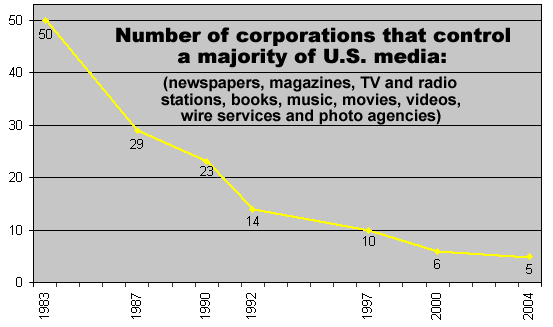


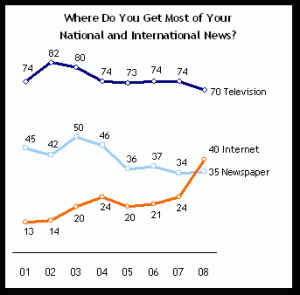 Last month we told you about new Gallup research that showed
Last month we told you about new Gallup research that showed 
 “Today is set aside as
“Today is set aside as  “Victimhood is an irresponsible abdication of responsibility, a surrender.”
“Victimhood is an irresponsible abdication of responsibility, a surrender.”

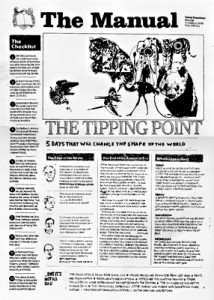 A team of enterprising publishers in the UK produced a four-page
A team of enterprising publishers in the UK produced a four-page 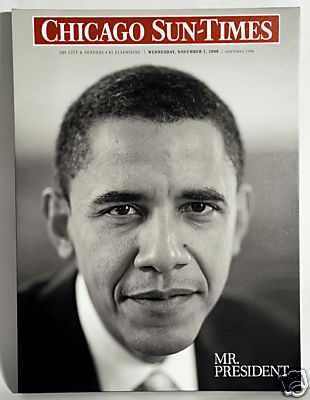 The Chicago Sun-Times
The Chicago Sun-Times 

 The Onion offered a tutorial in how to write a provocative magazine cover line (right).
The Onion offered a tutorial in how to write a provocative magazine cover line (right). The Simpsons showed its snotty character Nelson insulting a journalist. “Hah hah! Your medium is dying!”
The Simpsons showed its snotty character Nelson insulting a journalist. “Hah hah! Your medium is dying!”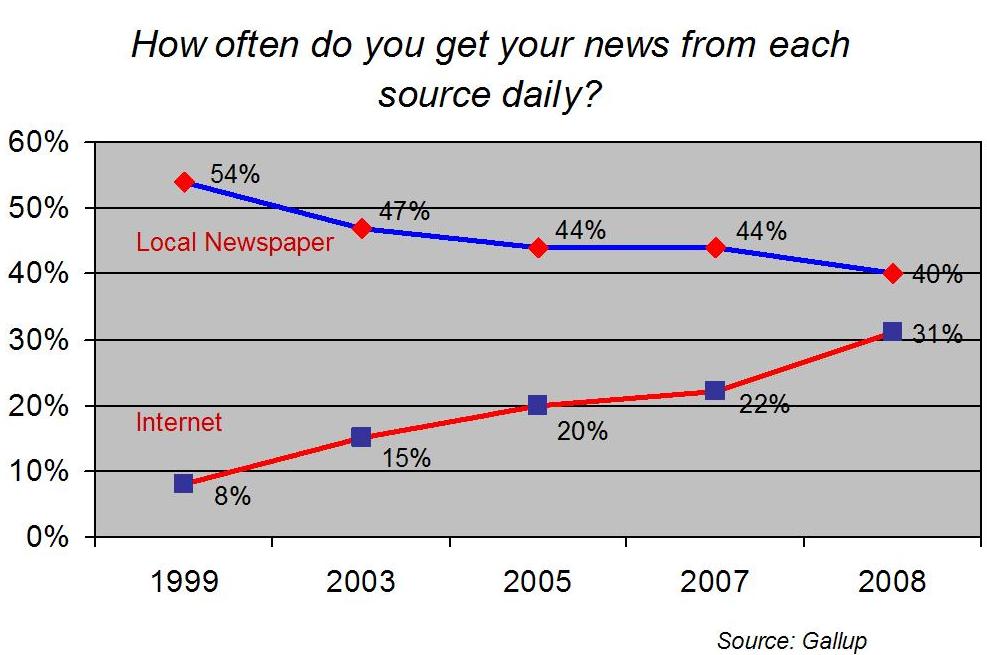




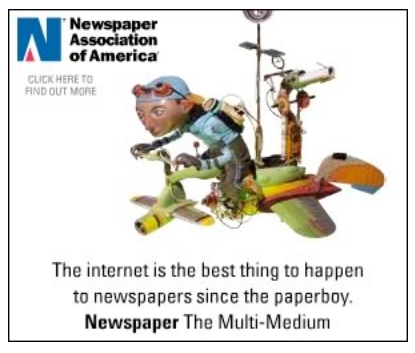
 And Advertising Age
And Advertising Age  Editors at the Wine Spectator
Editors at the Wine Spectator 
